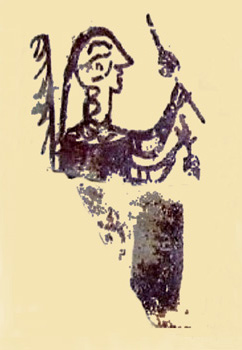Textiles and rituality in Iberian Culture
Palabras clave:
gender archaeology Resumen
Resumen
The aim of this article is to examine archaeological finds related to textile production in the Iberian Culture, particularly between the fifth and third centuries BC. We focus especially on ritual activities and consider both their presence in Iberian funerary contexts and sanctuaries and their links to activities carried out by women. We also highlight the presence and strong symbolic implications of objects related to the world of yarn making and weaving. On the one hand, the presence of these objects reveals the distinct intention of representing productive activities which, as in other Mediterranean contexts, are intimately linked to the female gender. On the other hand, and through certain images and the prominence of grave goods, these objects also envisage ideas about status, as they always appear associated with women of the aristocracy. As well as gender and social hierarchy, these symbols also represent a high level of skill in the practice of certain activities, which only a few women – all members of the most privileged groups – would be qualified to perform.
 Descargas
Descargas
Descargas
Publicado
Cómo citar
-
Resumen413
-
PDF 335
Número
Sección
Licencia

Este obra está bajo una licencia de Creative Commons Reconocimiento-NoComercial-SinObraDerivada 4.0 Internacional.
Con la publicación impresa de los trabajos, los/as autores/as aceptan que el Departament de Prehistòria, Arqueologia i Història Antiga de la Universitat de València pueda permitir la difusión y el libre acceso a través de las direcciones electrónicas y enlaces del editor/a.
El contenido de los trabajos es responsabilidad de los/as autores firmantes y no expresa la posición ni la opinión del Consejo de Redacción.
Las obras que se publican en esta revista están sujetas a los siguientes términos:
1. La revista conserva los derechos patrimoniales (copyright) de las obras publicadas, y favorece y permite la reutilización de las mismas bajo la licencia indicada en el punto 2.
2. Las obras se publican en la edición electrónica de la revista bajo una licencia Creative Commons Reconocimiento-NoComercial-SinObraDerivada 3.0 España (texto legal). Se pueden copiar, usar, difundir, transmitir y exponer públicamente, siempre que se cite la autoría, la url, y la revista, y no se usen para fines comerciales.
3. Los/as autores/as están de acuerdo con la licencia de uso utilizada por la revista, con las condiciones de auto-archivo y con la política de acceso abierto.
4. En caso de reutilización de las obras publicadas debe mencionarse la existencia y especificaciones de la licencia de uso además de mencionar la autoría y fuente original de su publicación.



